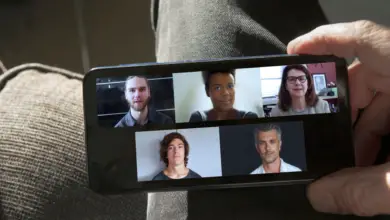Is It Rude To Eat In A Zoom Meeting?

As with any form of communication, there’s a certain etiquette that should be observed in Zoom meetings. This includes maintaining a professional appearance, muting when not speaking, and avoiding background noise.
One of the most hotly debated topics is eating during a Zoom meeting. Is it rude? Is it acceptable? Let’s delve into the factors that might influence this.
The Debate: Eating During a Zoom Meeting

On one side of the debate, some argue that eating during a virtual meeting is equivalent to eating in an in-person meeting. Just as it might be frowned upon to bring a full meal to a conference room, the same rule should apply to a digital setting. They claim it’s distracting, unprofessional, and even disrespectful, and that it could give the impression that the meeting isn’t your top priority.
On the other hand, advocates for eating during Zoom meetings point out the unique circumstances that often accompany virtual meetings. Many people are working longer hours from home, balancing various responsibilities simultaneously. For them, sometimes the only time to grab a bite might be during these online meetings. They argue that as long as the person is discreet and considerate, for example, by turning off the camera while eating or choosing non-disruptive foods, eating should be acceptable.
Another aspect of the debate considers the type of meeting being held. If it’s an informal catch-up between colleagues, eating might not be a big deal. However, if it’s a formal presentation or an interaction with a client, many would argue that professionalism should be maintained and eating should be avoided.
In essence, the debate around eating during Zoom meetings is centered around two key elements: the importance of maintaining professionalism in all settings and the need to adapt to the changing realities of working from home. As with many aspects of modern etiquette, opinions differ, and the ‘right’ answer may depend on the specific circumstances and cultural norms of the participants.
Understanding the Context of the Meeting

Whether or not it’s acceptable to eat during a Zoom meeting can significantly depend on the context of the meeting. The type of meeting, its formality level, the participants involved, and the cultural norms can all influence this decision.
1. Type of Meeting: If the meeting is an informal team check-in or a brainstorming session, it might be more acceptable to eat compared to a formal presentation or a meeting with external clients or stakeholders.
2. Level of Formality: As a rule of thumb, the more formal the meeting, the less appropriate it is to eat during the meeting. For instance, if you’re in a job interview or presenting a sales pitch, it’s best to focus entirely on the task at hand. Conversely, during a casual team catch-up or a virtual happy hour, eating might be more acceptable.
3. The Participants: Consider who is in the meeting. If it’s a small internal team where everyone knows each other well and is comfortable, eating may not be a big deal. However, if you’re meeting with people you don’t know well, especially in a professional setting, eating could be seen as unprofessional.
4. Cultural Norms: Meetings that involve participants from various cultural backgrounds require a sensitivity to different etiquette norms. In some cultures, it might be considered rude to eat in a professional setting, while in others, it might be more acceptable.
5. Explicit Guidelines: Some organizations or meeting organizers may provide explicit guidelines about eating during virtual meetings. If such guidelines exist, they should be followed.
6. Timing of the Meeting: Meetings that occur during traditional meal times or meetings that are unusually long may make it more acceptable to eat, provided it is done discreetly and without disrupting the flow of the meeting.
Survey Results: What do People Really Think?
In order to gather a broad perspective on this topic, we conducted an online survey asking people about their opinions on eating during Zoom meetings. Here’s what we found:
1. Attitudes Vary: The results showed that opinions on this issue are far from unanimous. About 40% of respondents found eating during Zoom meetings to be unprofessional or distracting, while 35% viewed it as a necessity given the demands of remote work. The remaining 25% were indifferent, indicating they did not find it either rude or necessary.
2. Depends on the Context: A large majority, nearly 70% of respondents, agreed that the appropriateness of eating during a Zoom meeting depends heavily on the meeting’s context, including its formality level and who is present.
3. Meal Timing Matters: 60% of the respondents said that if the meeting is scheduled during a traditional meal time, eating should be acceptable.
4. Permission Can Make a Difference: Almost 80% of the respondents said that if the meeting organizer or host explicitly says it’s okay to eat, then it becomes acceptable.
5. Mindful Eating Preferred: About 85% of participants said that if someone must eat, they should mute their microphone while chewing, avoid messy or noisy foods, and consider turning off their camera.
6. Open Communication Appreciated: Over 90% of respondents valued open communication. They preferred that anyone planning to eat during a Zoom meeting inform the other participants in advance.
The survey results demonstrate a wide range of attitudes toward eating during Zoom meetings, underscoring that the “right” answer is highly situational. It seems clear, however, that whatever decision is made, it should be done with consideration for the context of the meeting, the participants involved, and with as much open communication as possible.
Reasons Why It Might Be Considered Rude
To fully grasp why some may view eating during a Zoom meeting as impolite, it’s important to delve into the specific reasons that contribute to this perspective.
1. Distraction: The primary argument is that eating can create a distraction. The noise of chewing, the sight of food, or even the wrapper’s crinkling can pull attention away from the meeting’s main topic. It is generally perceived that meetings should be free from unnecessary interruptions to maintain a smooth flow of discussion.
2. Disrespectful: Some people may perceive eating during a meeting as a sign of disrespect. This is particularly true in formal or high-stakes meetings, where undivided attention and professional decorum are expected. Eating may signal that the person is not fully engaged or that they don’t value the meeting enough to dedicate their undivided attention to it.
3. Unprofessional: From a traditional business etiquette perspective, consuming food during a professional meeting—unless it’s a designated lunch meeting—can be viewed as unprofessional. Even in the virtual world, many people maintain the stance that such behaviors should be avoided to uphold professional standards.
4. Negative Impact on Communication: Eating can inhibit the speaker’s ability to communicate effectively. If a participant’s mouth is full when they’re asked a question or expected to contribute, it may lead to awkward pauses or unclear speech.
5. Unequal Experiences: Not everyone may have the opportunity or feel comfortable eating during the meeting. This can create an unequal dynamic, making some participants feel left out or uncomfortable.
6. Cultural Sensitivities: In some cultures, eating in front of others without sharing or eating outside of designated meal times can be seen as impolite. Virtual meetings often involve individuals from various cultural backgrounds, and eating during meetings could inadvertently offend someone.
Remember, these reasons do not suggest that eating during a Zoom meeting is always considered rude—it largely depends on the specific circumstances, participants, and nature of the meeting. However, being aware of these points can help individuals make more considerate decisions when balancing their nutritional needs with professional obligations.
Reasons Why It Might Be Acceptable
While there are valid reasons why eating during a Zoom meeting could be seen as impolite, there are also circumstances and perspectives that make it acceptable.
1. Blurred Boundaries Between Work and Home: The shift to remote work has blurred the lines between personal and professional life for many. Employees often find themselves in back-to-back meetings, with little time for personal needs like eating. Given these circumstances, it’s understandable that someone might need to eat during a meeting.
2. Long Meeting Duration: If a meeting extends over a mealtime, it is generally considered acceptable to eat, especially if this has been communicated in advance. During long workshops or training sessions, it’s necessary to refuel in order to stay focused and productive.
3. Informal Meetings: In less formal meetings, such as team check-ins or brainstorming sessions, the atmosphere may be more relaxed. As long as the participants are comfortable, eating might be less of an issue.
4. When Everyone Else Is Doing It: If it’s a virtual lunch meeting or a social event where everyone is encouraged to bring their own food and drinks, then obviously, eating is not just acceptable but expected.
5. When Permission Is Granted: If the meeting organizer or leader gives the go-ahead for participants to eat, then it is generally acceptable to do so. Clear communication around expectations can help avoid any misunderstandings.
How to Politely Eat If It’s Unavoidable
Sometimes, despite our best efforts, eating during a Zoom meeting might be unavoidable. Here are some tips on how to do it with minimal disruption and the most respect for your fellow attendees:
1. Inform Participants: If you know you’ll need to eat during a meeting, it’s courteous to inform the other participants in advance. This sets the expectation and allows others to make a similar choice if they wish.
2. Choose Discreet Foods: If possible, choose foods that are quiet to eat and not messy. For instance, a sandwich might be a better choice than a bag of crunchy chips or a slurpy soup.
3. Use Mute: Always mute your microphone while chewing or swallowing to avoid transmitting any eating sounds. Remember to unmute when you need to speak.
4. Turn Off the Camera: If your meal is visually distracting or messy, consider turning off your camera while you’re eating. You can turn it back on when you’re done.
5. Be Ready to Participate: Make sure you’re still ready to participate in the meeting. Don’t let your meal distract you from the discussion at hand. If asked a question, finish swallowing before responding to avoid talking with your mouth full.
6. Keep it Clean: Have napkins on hand and be mindful of keeping your eating space clean. Seeing a messy eating area can be a visual distraction.
7. Limit Multitasking: Try to avoid multitasking as much as possible while eating. The more focused you are on the meeting, the less likely you’ll be seen as unprofessional or disengaged.
Remember, the key is to balance your own needs with respect for the meeting and its participants. A thoughtful, considerate approach will go a long way towards maintaining a professional atmosphere, even if you need to eat.
Alternatives to Eating During a Meeting
If you find yourself consistently needing to eat during Zoom meetings but want to maintain professionalism and avoid potential distractions, there are several alternatives you can consider:
1. Schedule Meal Times: Try to schedule your meals outside of your meeting times. If your calendar is flexible, this could be the easiest solution.
2. Snacks and Beverages: Instead of full meals, consider having snacks or drinks that are less disruptive. Choosing mute-friendly foods or having a coffee or tea could be less noticeable and won’t disrupt the flow of the meeting.
3. Eat Beforehand: If you know you have a long meeting coming up, try to eat a substantial meal beforehand. This can help stave off hunger during the meeting.
4. Breaks During Long Meetings: If you’re organizing the meeting and it’s expected to be lengthy, consider scheduling short breaks where attendees can grab a snack, stretch, or attend to other needs.
5. Request a Different Meeting Time: If you consistently have meetings scheduled over your lunch hour, consider discussing this issue with your team or manager. It may be possible to shift meeting times to better accommodate everyone’s meal times.
6. Turn Off Your Camera: If eating during a meeting is unavoidable and the context is appropriate, consider turning off your camera while you eat to minimize visual distraction for others.
Remember, every situation is unique, and it’s important to consider the nature of the meeting and the expectations of those involved. Ultimately, finding the right balance between maintaining professional etiquette and attending to personal needs is key to successful virtual interactions.





